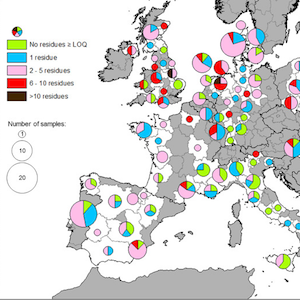
A particularly large collembolan (almost 2mm long) found in an oak forest in Ireland. Soil collembolan species are typically much smaller, paler, and might not have eyes. Together with microbes these animals help elements like nitrogen cycle between plants and soil. Credit: Tancredi Caruso – Author
Microscopic animals are busy distributing microplastics throughout the world’s soil
King George Island, the largest of the South Shetland Islands, lies 120km, about a day’s sail off the northernmost tip of Antarctica. It’s a rugged place – home to seals, penguins, a few scientific bases and not much else. Though the climate is mild compared to the mainland, temperatures still barely reach above freezing in the summer months and the island is almost entirely covered in ice. If microplastics can enter the food web here, they can probably do so almost anywhere on earth.
But this is exactly what colleagues and I discovered, when we searched for microplastics inside tiny creatures found on King George Island. Our results, now published in the Royal Society journal Biology Letters, show that microplastics are becoming an integral part of the soil food web.
Microplastics are pieces of plastics smaller than a few millimetres, and usually much smaller than that. These bits and pieces break off from the hundreds of millions of tons of plastics that are produced each year, and collectively form a huge amount of waste. And, as plastic degrades only very slowly, it has dramatically accumulated in the environment, everywhere from the deepest ocean floors to the North and South poles.
Read the full article: https://theconversation.com/microscopic-animals-are-busy-distributing-microplastics-throughout-the-worlds-soil-141353



